How to make the perfect, soft and fluffy steamed bao buns with step-by-step photos. Follow these tips and tricks to make the perfect homemade bao buns, perfect for filling with your favourite ingredients. Includes instructions for steaming the bao buns on the stove and in a steam oven.
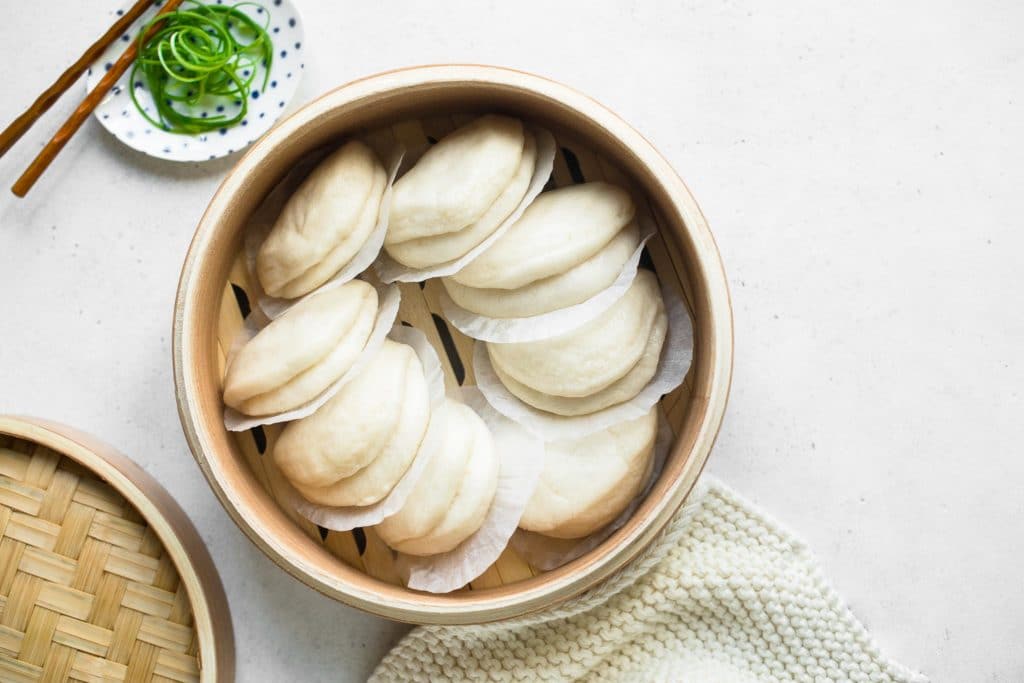
Bao Buns
When David Chang first offered his version of Pork Belly Buns on his restaurant menu at Momofuku Noodle Bar in New York, back around 2004, nobody could have predicted that the humble bao buns would be catapaulted to international foodie fame.
Even I sought out a table at Momofuku each time I visited New York, no matter how long the queue. I simply loved his idea of turning a plain bao bun into a sandwich or burger of sorts, filled with tender pork belly and a simple garnish of pickled cucumbers.
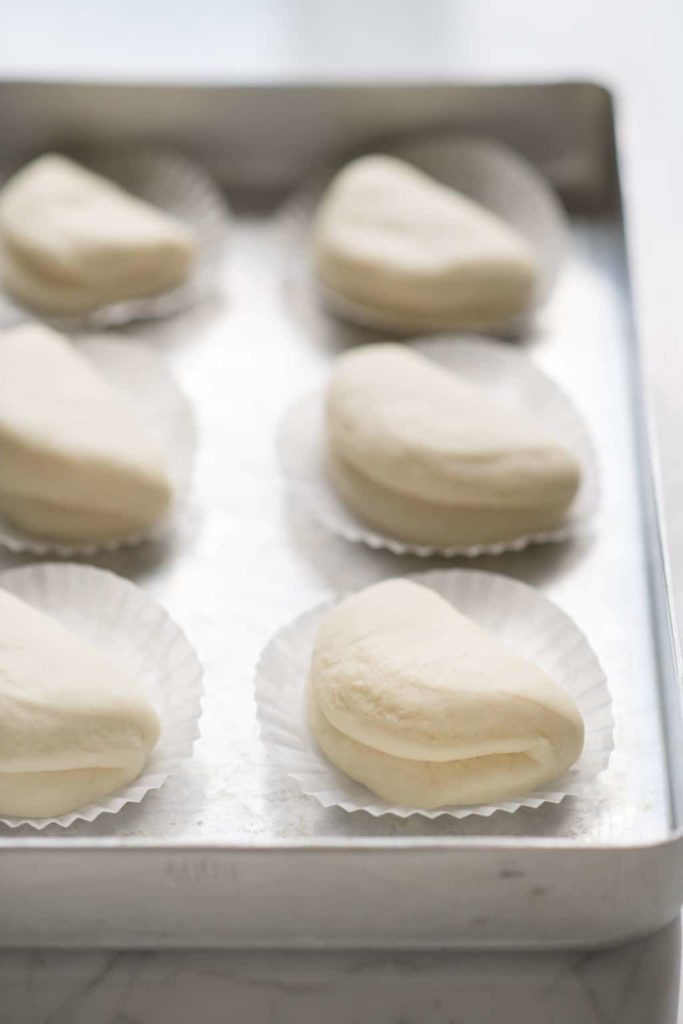
Homemade Bao Buns
Sadly, back in Zurich, bao buns were nowhere to found in the shops, nor restaurants (and this remains the case in 2019!), so I set about making steamed bao buns using David Chang’s recipe from his cookbook, Momofuku.
Over the years, I have fiddled with the recipe somewhat (David Chang’s recipe makes about 50 buns!), and the bao bun recipe below is one which I turn to throughout the year.
Why This Recipe Works
- This bao bun recipe makes light, fluffy and pillowy steamed buns which are perfect for stuffing with your favourite fillings.
- You can use this recipe to shape the bao buns however you like.
- You can use this recipe for filled or stuffed bao buns. Once you have rolled out the buns, simply fill and shape the buns, and then leave them to rise for the second time as per the recipe.
- The cooked bao buns can be frozen and simply reheated in the steamer.
Steamed Buns
Traditional Chinese steamed buns are round in shape with an enclosed filling, either with char siu pork or a traditional ground pork mixture with slices of Chinese lap cheong sausage and boiled egg.
Steamed buns can also be made plain, i.e. without any filling. In my family, we often make plain steamed buns, which are round in shape with a twisted knot at the top, to serve alongside roast duck.
But somewhere along the way, someone came up with the genius idea of making folded over steamed buns which could be opened up and filled with a variety of ingredients, much like a burger or sandwich.
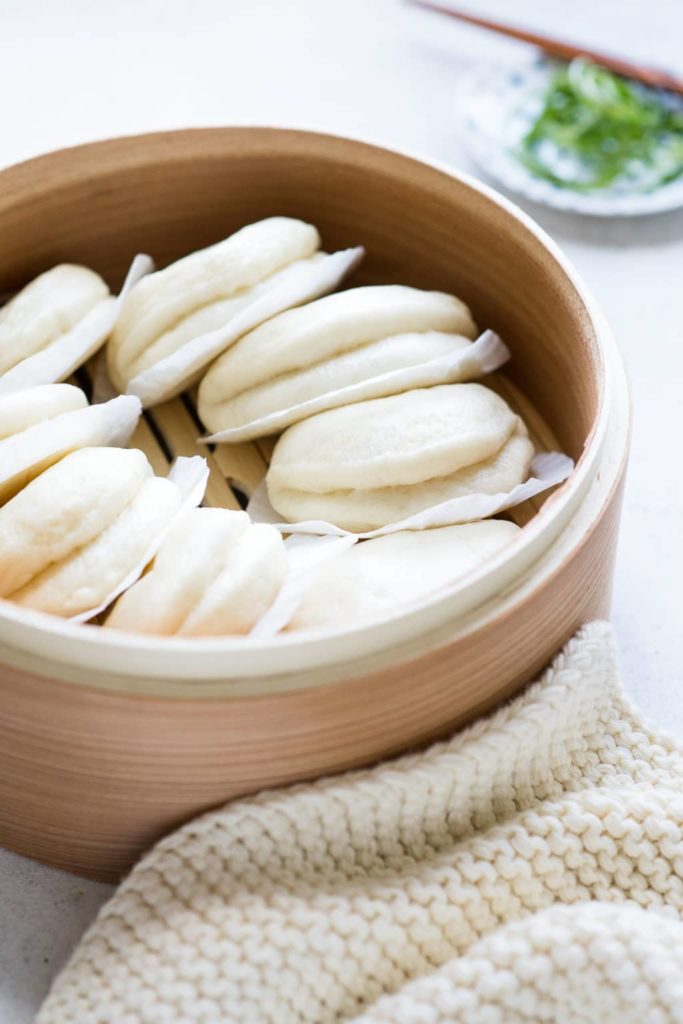
Bao Buns Recipe
If you are lucky, your local Asian grocer might stock ready-made bao buns in the freezer section.
If not, this easy bao bun recipe might require a bit of planning and preparation, but you will be rewarded with deliciously fluffy homemade buns which will delight everyone who tries them.
How to Make Bao Buns
Step 1
To make the perfect bao buns, you need both yeast and baking powder to help the buns to rise. Start by measuring all of the dry ingredients into a large mixing bowl.
Then measure the warm water and oil into a measuring jug. The water needs to be a bit more than lukewarm to help activate the yeast, but it shouldn’t be boiling hot.
Step 2
I prefer to make my bao bun dough using my electric stand-mixer, but you can, of course, do everything by hand.
Using a dough hook on medium speed, mixing the liquid into the dry ingredients. Depending on the type of flour which you have used, you might need more or less liquid that than stated in the recipe. You want just enough liquid to bring everything together into a sticky dough.
Then, continuing on medium speed, knead the dough until it becomes soft and smooth to touch. This should take about 10 minutes using the stand-mixer on medium speed, or about 5 minutes by hand.
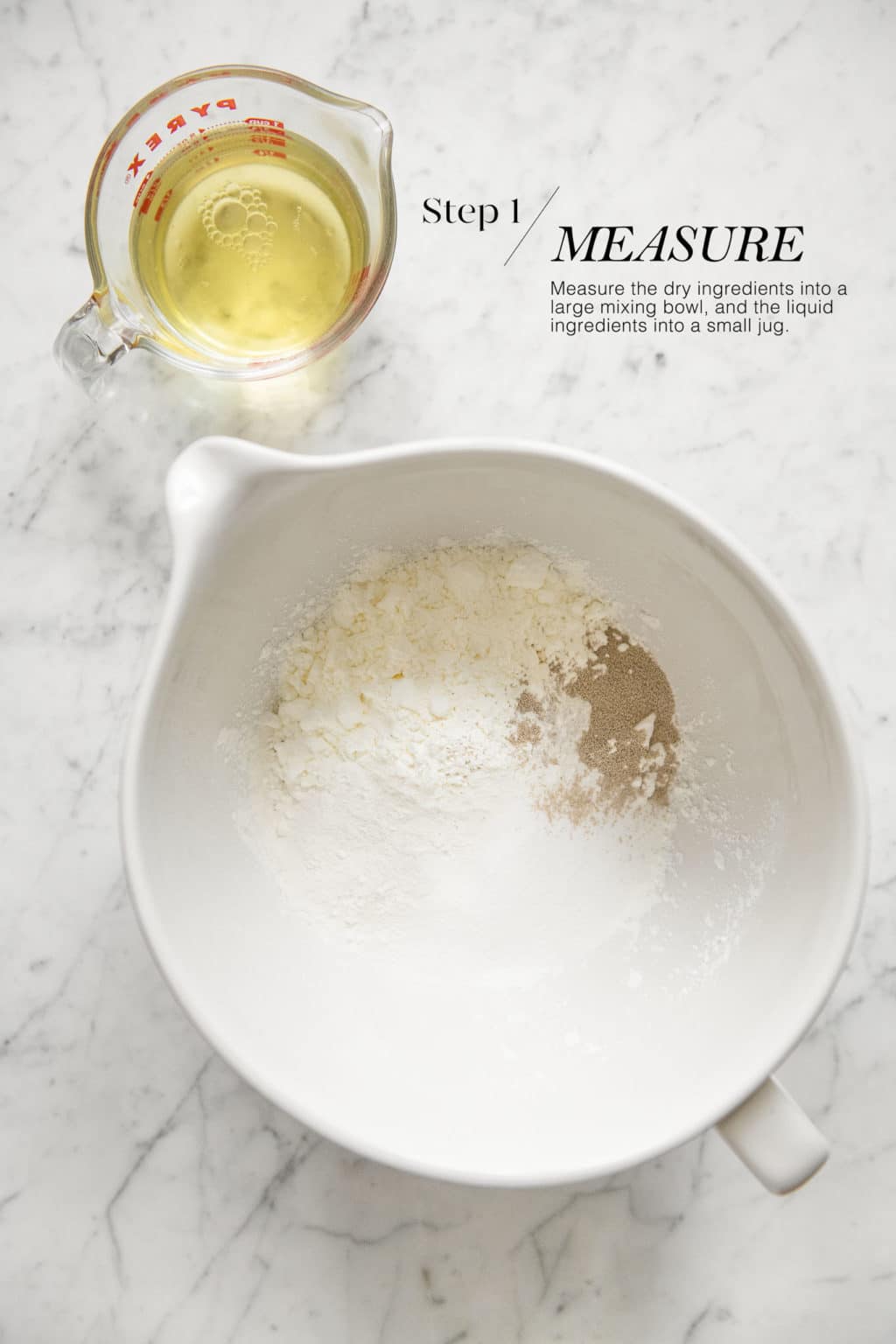

Step 3
Once the dough is soft and smooth, I recommend kneading it by hand for a few more minutes on the kitchen benchtop.
To test if the dough is ready, press your finger into the dough to make an indent. If the dough bounces back, it is ready. If the indent remains, you need to knead the dough a little bit more.
Place the ball of dough back into the (clean) mixing bowl, and place the bowl somewhere warm for about 60 to 90 minutes for the dough to rise and double in size.
Step 4
Once the dough has doubled in size, punch it back and knead it by hand for about 5 minutes to release any air bubbles in the dough.
Then roll out the dough until it is about 1 cm in height.
Use your hands to rub some oil onto the surface of the dough. This will prevent the dough from sticking together later when you shape the buns.
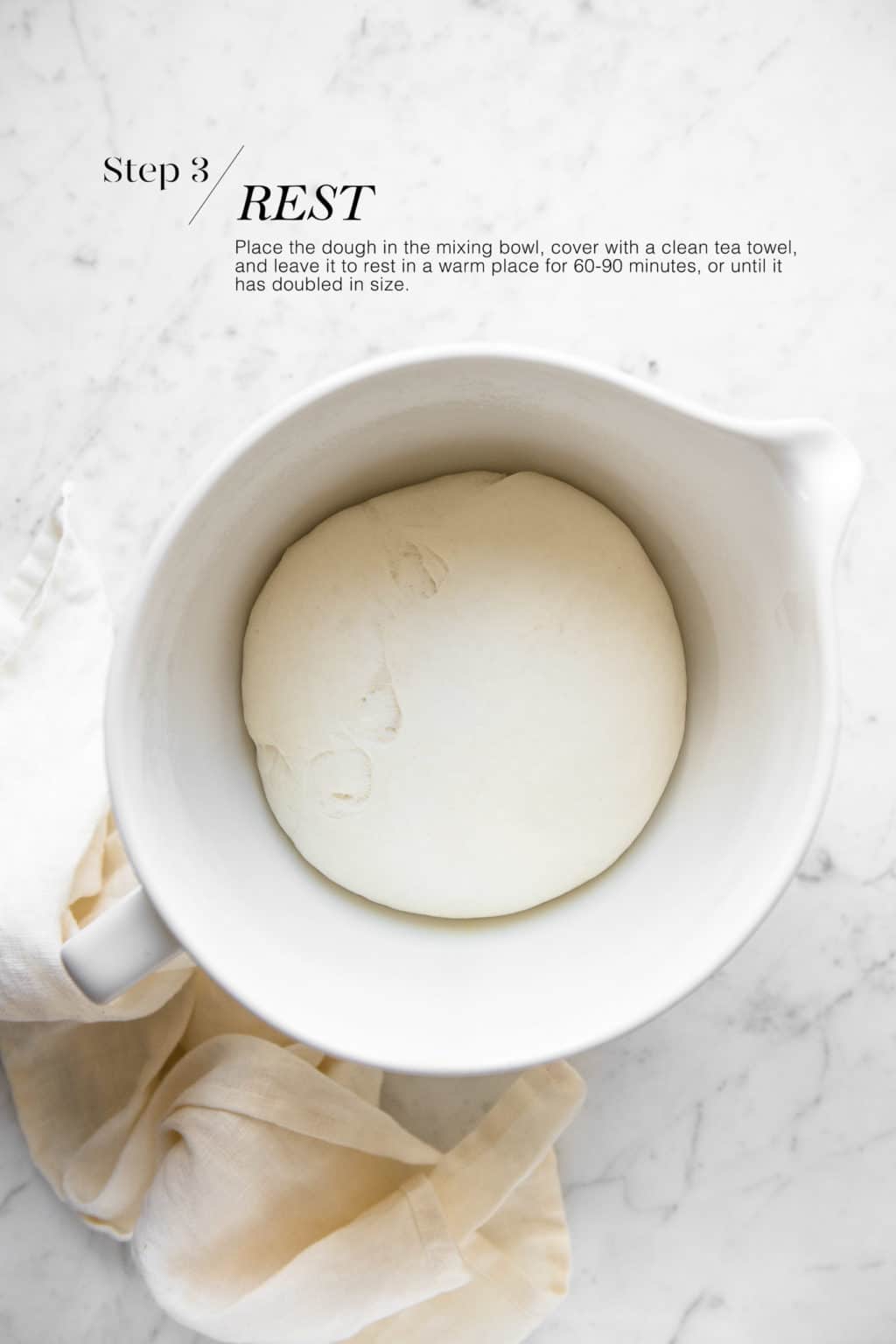
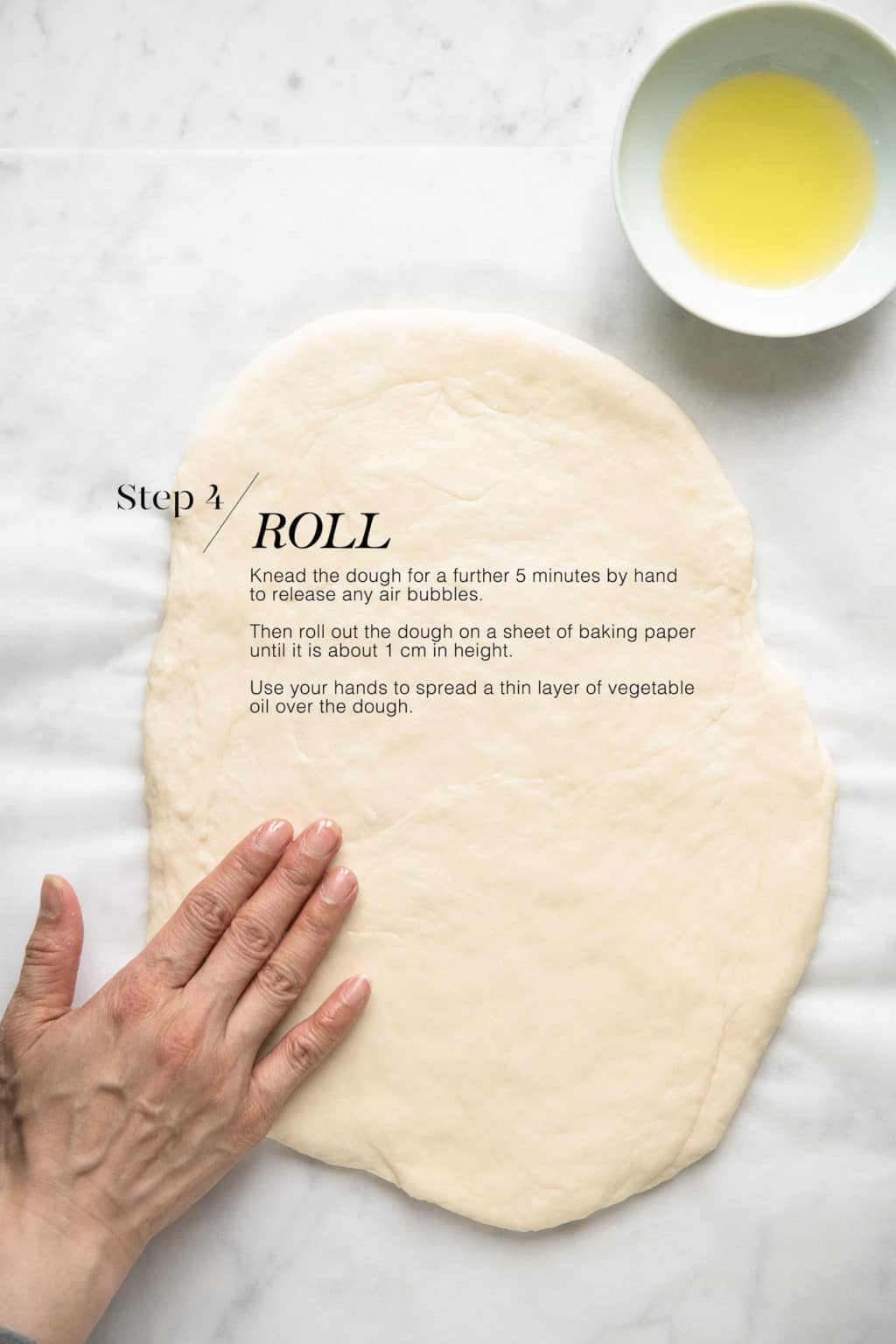
Step 5
Use an 8 cm (3 inch) cookie cutter to cut out rounds from the dough. Re-roll the dough as needed until you have used up all of the dough.
Step 6
Place these rounds onto a small sheet of baking paper – I like to use plain white cupcake wrappers which I flatten with a rolling pin. This saves me from having to cut up a sheet of baking paper into small pieces.
Fold over each round in half and then use a rolling pin to gently flatten the dough to form the bun shape.

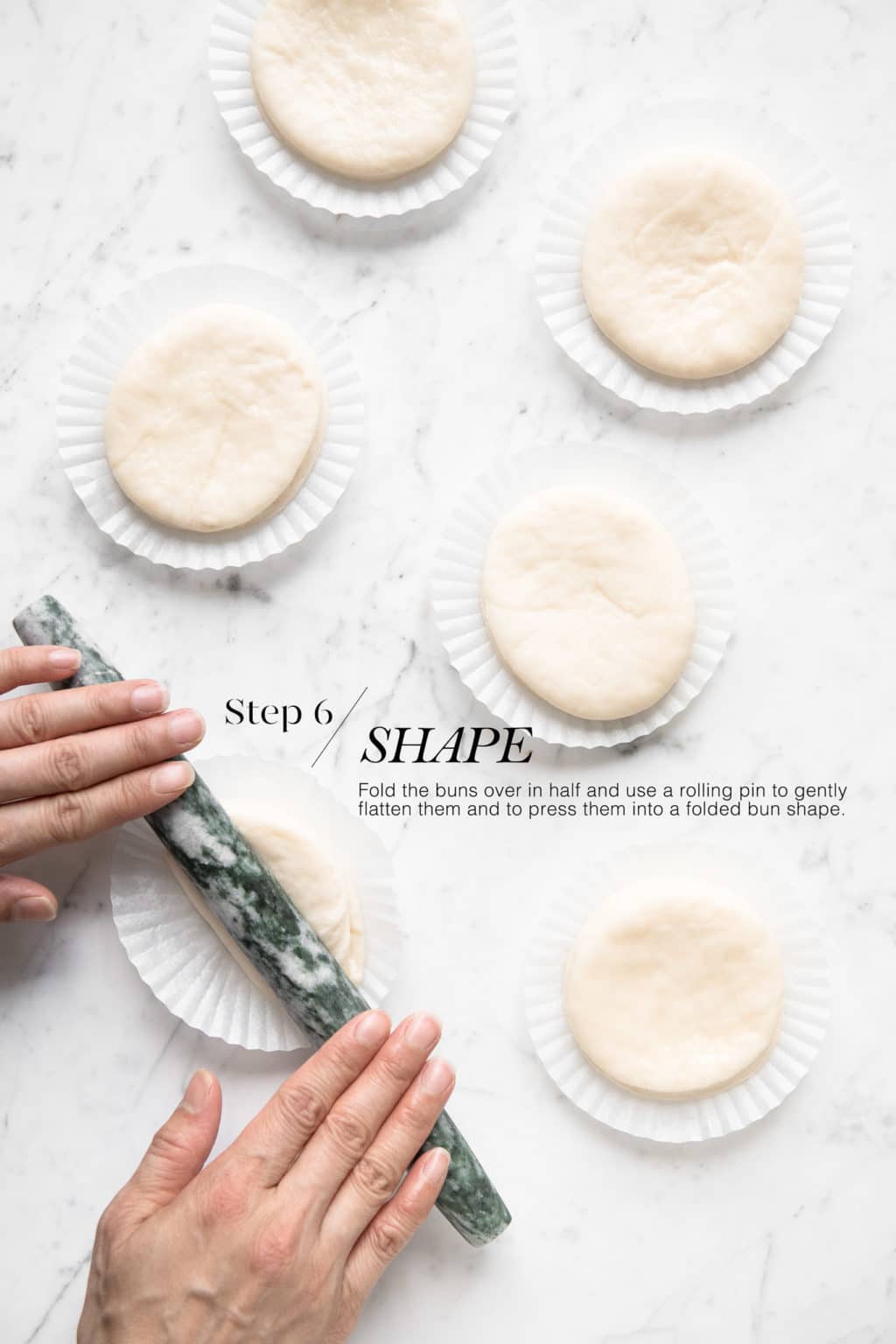
Step 7
Place all of the shaped buns onto a large tray, cover with a tea towel, and place in a warm place for about 30 minutes for the buns to rise again.
After this time, the bao buns should have risen and puffed up slightly.
Step 8
Meanwhile, prepare the steamer on the stove (see notes below). Steam the buns in batches for 10 to 12 minutes, or until they are puffy and soft, and cooked all the way through.
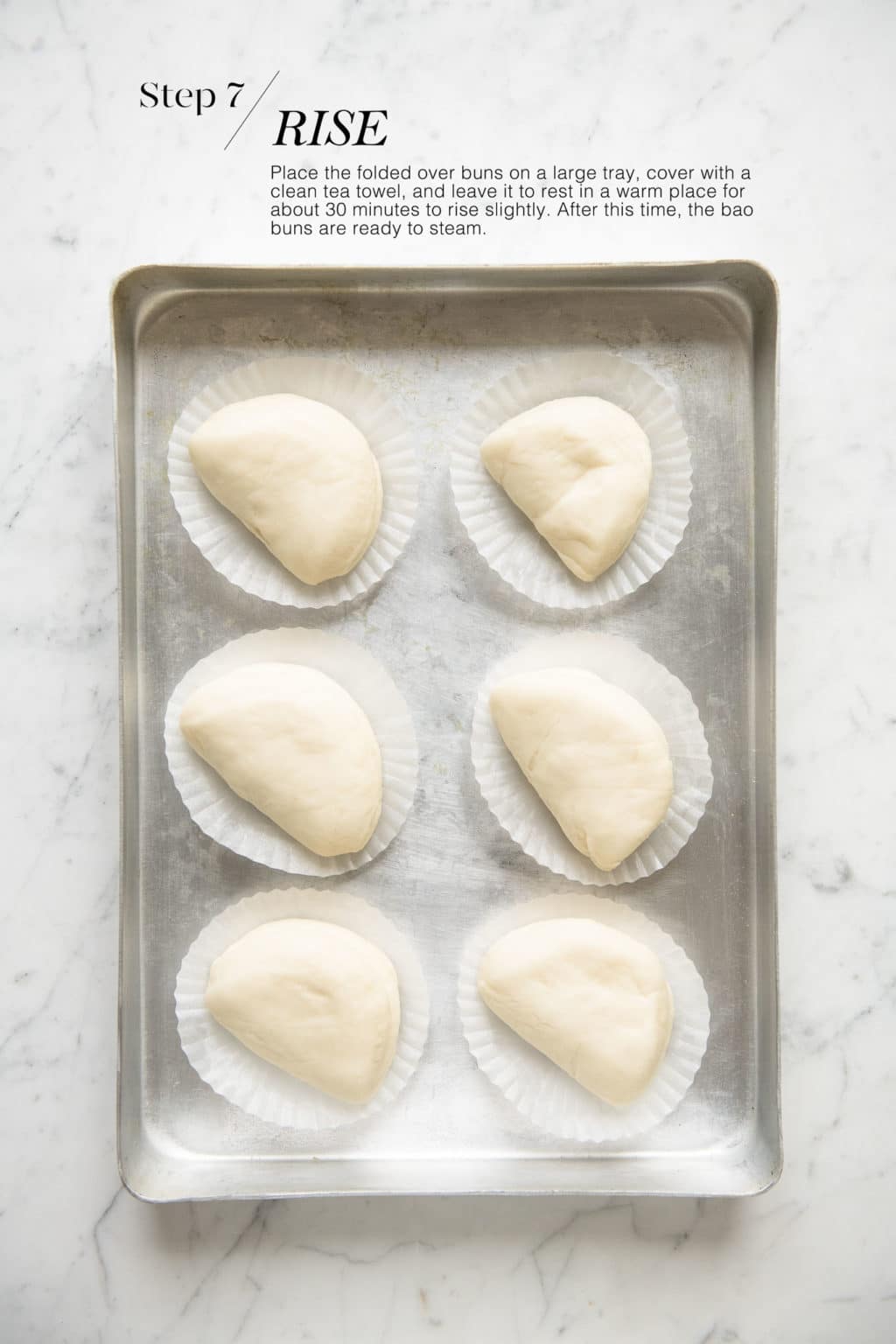
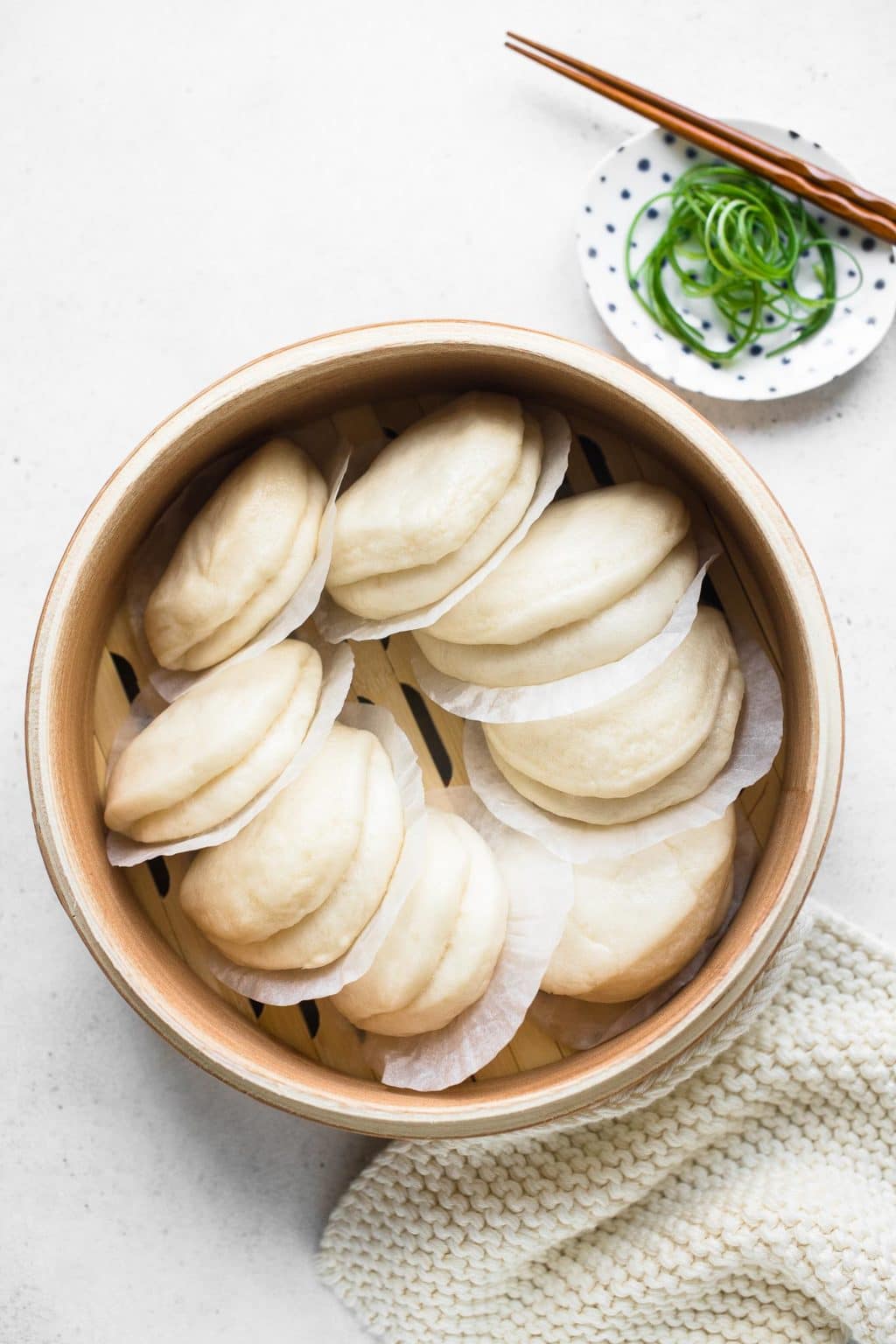
How to Proof Dough
Dough needs a warm environment for the yeast to activate and cause the dough to rise. If you don’t have a warm place in your home, try one of the following ideas:
- In the oven with the oven light switched on (works only for some ovens).
- In the oven with a tray of boiling water on the bottom shelf. Use about 1 litre (4 cups) of water, and top up after about 1 hour.
- In the oven or a steamer oven at a low temperature of about 25-40°C (77-104°F).
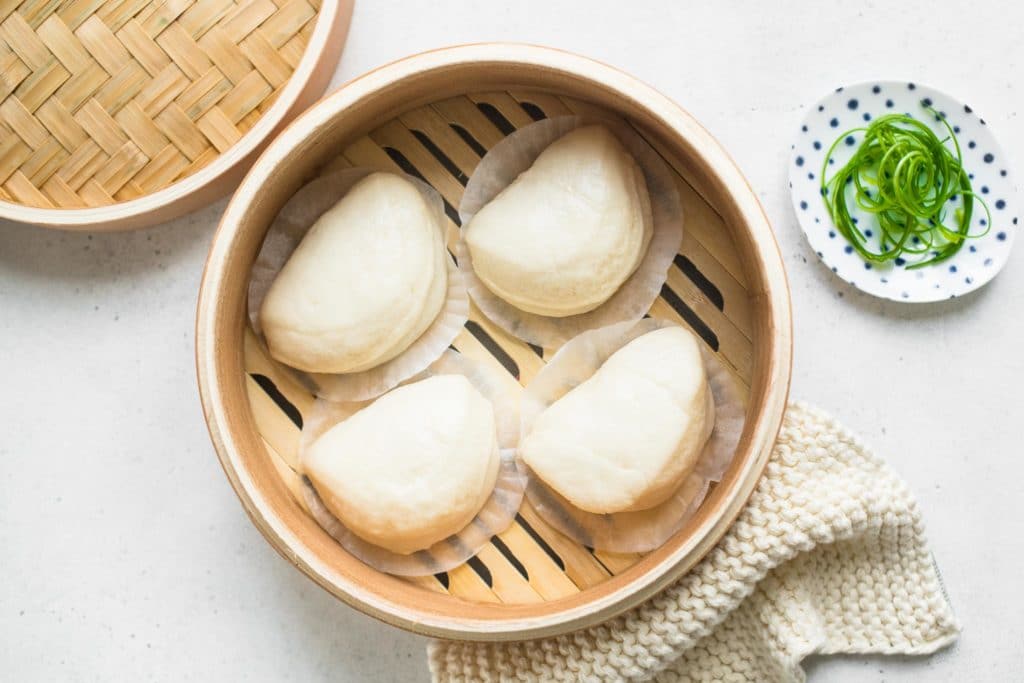
How to Steam Bao Buns
- Bamboo steamers are great for steaming bao buns and Asian grocery stores tend to stock a large variety of sizes at inexpensive prices. Aside from price, another advantage of bamboo steamers is that they also look good for serving at the table.
- I recommend buying the largest steamer which can fit your saucepan and stove.
- The bamboo steamer should be the same size as the saucepan you are using underneath. So if you are using a bamboo steamer which is 12 inches in diameter, your saucepan should also be 12 inches in diameter.
- If you plan to make bao buns (or even dumplings) often, I recommend buying at least two steamer baskets which can sit on top of each other to save on cooking (and waiting) time.
- If you are particularly serious about making bao buns, I recommend investing in a multi-tiered metal or stainless steel steamer which you can find at most Asian grocery stores. These also come in a range of sizes and have the advantage of being dishwasher-safe.
- Fill the saucepan about one-third full with boiling water, and place the steamer baskets on top.
- Place the saucepan with the steamer baskets on the stove over low-medium heat. If you steam the bao buns at too high a temperature, there is a risk that the buns might overcook or they might even become soggy.
- Place the bao buns in each steamer basket, giving them some room to rise and expand upon cooking.
- Place the lid on the top steamer basket and steam for about 10 to 12 minutes, or until the buns have risen and are light and fluffy once opened.
Tips For Making Bao Buns
- Plain flour (all-purpose flour) works fine in this recipe as the cornflour (cornstarch) will help to give the buns a light and fluffy texture. The buns will be not be brilliant white like those found in Chinese restaurants, but the taste and texture should still be the same.
- For snowy white buns like those found in Chinese restaurants, I recommend using bleached flour which you can find in Asian grocery stores.
- It is important to knead the dough for the recommended amount of time. Failing to knead the dough properly may result in buns which appear blotchy (but should still taste fine), and this is due to not working the ingredients together sufficiently and/or failing to remove all of the air bubbles in the dough.
- Steam the buns on a low-medium heat so that the buns do not overcook and become soggy.
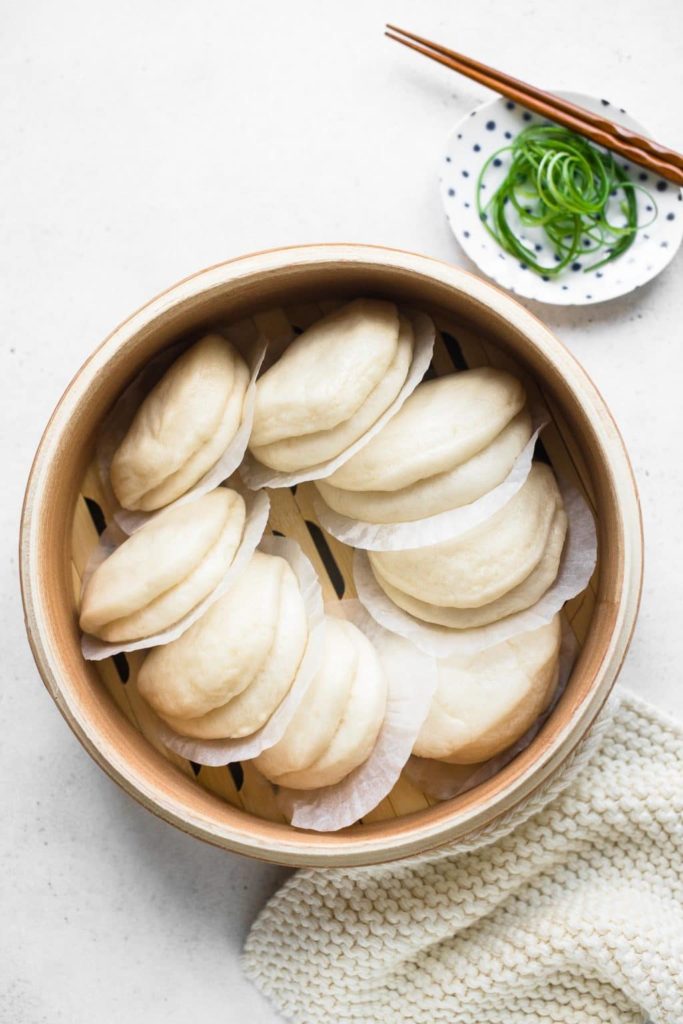
How to Make Steamed Bao Buns with a Steam Oven
To make bao buns in a steam oven or a combi-steam oven, use the following steps for proofing the dough and steaming the bao buns:
- First Proof: Place the dough into a large bowl which has been lightly oiled. Cover the bowl with some cling film or a re-usable bowl cover. Proof the dough in the steam oven/combi-steam oven at 40°C/104°F for about 1.5 hours, or until the dough has doubled in size.
- Second Proof: Once you have shaped the bao buns and placed them onto a small sheet of baking paper each, place them onto a large tray that will fit inside your steam oven/combi-steam oven. For my steam oven, I can fit a large sheet pan, which will comfortably fit 12 bao buns. There is no need to cover the buns. Proof the shaped bao buns at 40°C/104°F for about 30 minutes, or until the buns have puffed up slightly.
- Steaming the Bao Buns: Remove the tray of bao buns from the steam oven/combi-steam oven. Increase the temperature to 100°C/212°F. Once the steam oven/combi-steam oven has come to temperature, place the tray of bao buns back inside and steam them for 10-12 minutes.
Freezing Bao Buns
Bao buns are best eaten fresh and as soon as they are steamed.
Any leftover cooked bao buns can be stored in zip-lock bags in the freezer for 1-2 months. To reheat, simply steam the frozen bao buns for about 5 minutes to warm through completely.
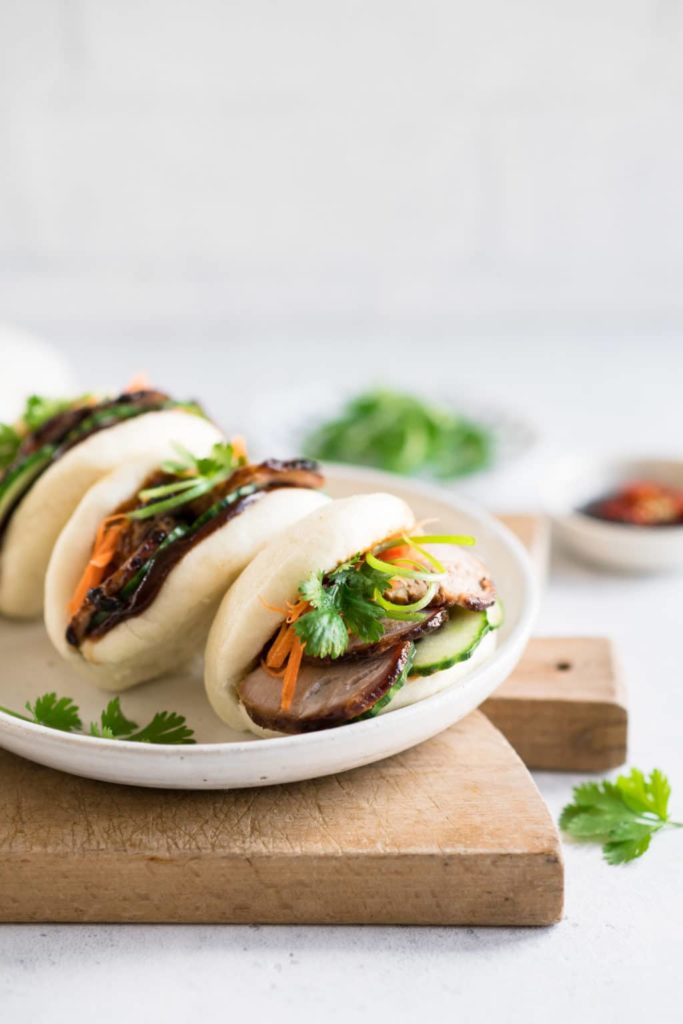
What to Serve with Bao Buns
One of my favourite ways of serving bao buns is to fill it with char siu pork and quick pickled vegetables. Please see my recipe for Sticky Pork Bao Buns for full details.
Other great fillings for bao buns include:
Chinese Barbecue Pork (Char Siu Pork)
PrintSteamed Bao Buns
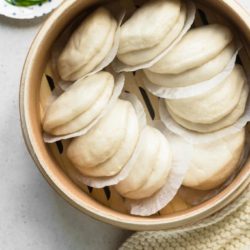
- Resting Time: 2 hours
- Prep Time: 1 hour
- Cook Time: 10 mins
- Total Time: 1 hour 10 minutes
- Yield: Makes 12-16 buns
- Category: Bread
- Method: Stove Top
- Cuisine: Chinese
How to make the perfect, soft and fluffy steamed bao buns with step-by-step photos. Follow these tips and tricks to make the perfect homemade bao buns, perfect for filling with your favourite ingredients. Includes instructions for steaming the bao buns on the stove and in a steam oven.
Ingredients
- 300 g (2 cups) plain flour (all-purpose flour) or bleached flour
- 125 g (1 cup) cornflour (US: cornstarch)
- 5 tablespoons caster sugar (super-fine sugar)
- 1 teaspoon instant yeast (also called instant dried yeast or fast-action dried yeast) (see Kitchen Notes)
- 2 1/2 teaspoons baking powder
- 180 ml (3/4 cup) warm water
- 60 ml (1/4 cup) vegetable oil, plus extra
Instructions
To prepare the buns
- Measure all of the dry ingredients into a large mixing bowl or the bowl of an electric stand-mixer (if using).
- Measure the warm water and oil into a measuring jug. The water needs to be a bit more than lukewarm to help activate the yeast, but it shouldn’t be boiling hot.
- Using the dough hook on medium speed, mixing the liquid ingredients into the dry ingredients. Depending on the type of flour which you have used, you might need more or less liquid that than stated in the recipe.
- Once you have a sticky dough, continue kneading the dough on medium speed until it becomes soft and smooth to touch. This should take about 10 minutes using the stand-mixer on medium speed, or about 5 minutes by hand.
- Once the dough is soft and smooth, I recommend kneading it by hand for a few more minutes on the kitchen benchtop.
- Place the ball of dough back into the (clean) mixing bowl.
- Cover the bowl with some cling film or a re-usable bowl cover.
- Place the bowl somewhere warm for about 60 to 90 minutes for the dough to rise and double in size.
To shape the buns
- Once the dough has doubled in size, punch it back and knead it by hand for about 5 minutes to release any air bubbles in the dough.
- Then roll out the dough until it is about 1 cm in height.
- Use your hands to rub some oil onto the surface of the dough.
- Use an 8 cm (3 inch) cookie cutter to cut out rounds from the dough.
- Re-roll the dough as needed.
- Place these rounds onto a small sheet of baking paper – I like to use plain white cupcake wrappers which I flatten with a rolling pin.
- Fold over each round and then use a rolling pin to gently flatten the dough to form the bun shape.
- Place all of the shaped buns onto a large tray, cover with a tea towel, and place in a warm place for about 30 minutes for the buns to rise again. After this time, the bao buns should have puffed up slightly.
To steam the buns
- Meanwhile, prepare the steamer on the stove (see Kitchen Notes below).
- Steam the buns in batches for 10 to 12 minutes, or until they are puffy and soft, and cooked all the way through.
- Serve the buns immediately.
Kitchen Notes
 DIFFERENT TYPES OF YEAST
DIFFERENT TYPES OF YEAST
* Please note that there is a difference between instant yeast (also called instant dried yeast or fast-action dried yeast) and dried yeast (also called active dry yeast). If you are not sure what type of yeast you have, please check the packaging for instructions on how to use the yeast.
* With instant yeast, you can add it directly to the flour mixture without having to activate it first.
* If you do not have instant yeast, I would suggest using the same amount of dried yeast. In which case, add the dried yeast to the warm water and set it aside for about 5 minutes until it is frothy. Add this yeast mixture, along with the vegetable oil, to the dry ingredients in the recipe above.
 WHAT TYPE OF FLOUR TO USE
WHAT TYPE OF FLOUR TO USE
* Plain flour (all-purpose flour) works well in this recipe as the cornflour (cornstarch) helps to give the buns a light and fluffy texture. However, the resulting buns will be a pale yellow in colour.
* For snowy white buns like those sold in Chinese restaurants, you can use bleached flour found in Asian grocery stores.
 HOW TO STEAM BAO BUNS
HOW TO STEAM BAO BUNS
* The steamer basket (whether bamboo or otherwise) should sit directly on top of a saucepan of the same dimension.
* Fill the saucepan with boiling water until about one-third full.
* Place the steamer basket on top of the saucepan.
* Place the bao buns in the steamer basket, leaving a bit of room for each to rise and puff up during cooking.
* Place the lid on top of the steamer basket.
* Steam over low-medium heat for 10 to 12 minutes.
 HOW TO MAKE BAO BUNS WITH A STEAM OVEN
HOW TO MAKE BAO BUNS WITH A STEAM OVEN
* First Proof: Cover the bowl with some cling film or a re-usable bowl cover. Proof the dough in the steam oven/combi-steam oven at 40°C/104°F for about 1.5 hours, or until the dough has doubled in size.
* Second Proof: Once you have shaped the bao buns and placed them onto a small sheet of baking paper each, place them onto a large tray that will fit inside your steam oven/combi-steam oven. For my steam oven, I can fit a large sheet pan, which will comfortably fit 12 bao buns. There is no need to cover the buns. Proof the shaped bao buns at 40°C/104°F for about 30 minutes, or until the buns have puffed up slightly.
* Steaming the Bao Buns: Remove the tray of bao buns from the steam oven/combi-steam oven. Increase the temperature to 100°C/212°F. Once the steam oven/combi-steam oven has come to temperature, place the tray of bao buns back inside and steam them for 10-12 minutes.
 HOW TO FREEZE BAO BUNS
HOW TO FREEZE BAO BUNS
Any leftover buns can be frozen in zip-lock bags for 1-2 months. Reheat the frozen steamed buns in a stovetop steamer for about 5 minutes, or until they are warmed all the way through.
 CONVERSIONS
CONVERSIONS
To convert from cups to grams, and vice-versa, please see this handy Conversion Chart for Basic Ingredients.
#eatlittlebird
#eatlittlebird
#eatlittlebird
#eatlittlebird
#eatlittlebird
#eatlittlebird
#eatlittlebird
Update
This recipe was first published on 17 May 2019. It has been updated with more comprehensive recipe notes.
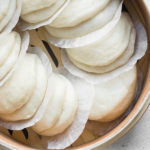
 Print
Print Pin Recipe
Pin Recipe Rate
Rate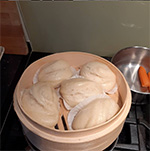
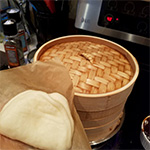
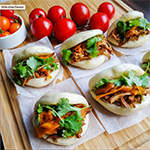

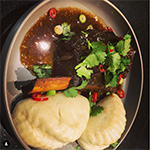
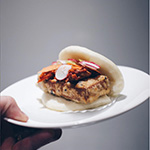
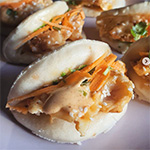
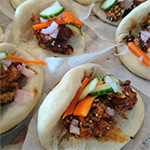
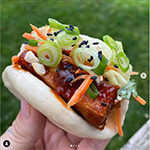

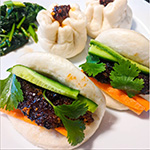
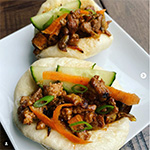
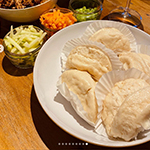
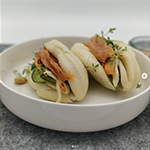
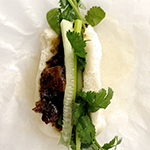
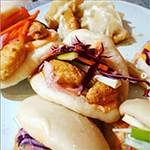
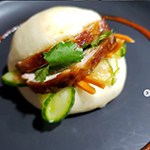
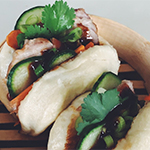
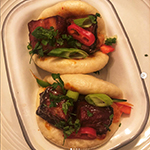

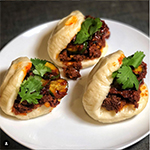
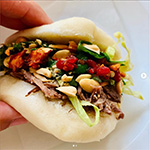
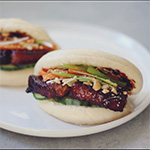


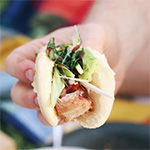
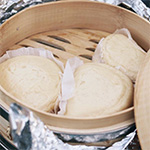
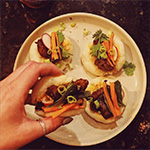
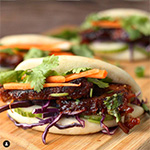
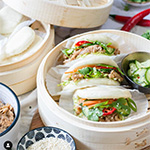
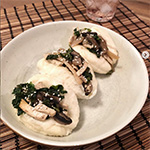
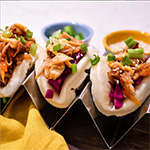
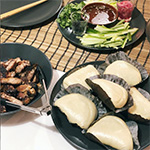
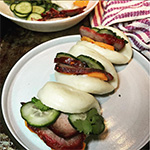
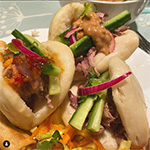

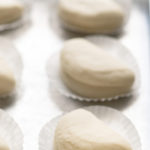
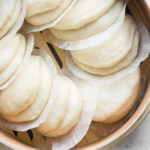
They look super yummy Thanh. I copy the recipe for later, I might include these in a Asian cooking workshop. Of course, I will tell you shared.
Will let you know how it goes. xx
Hi Ann,
I hope you will enjoy the recipe! Let me know how it goes 🙂 xx
These are so pretty! I make Chinese dumplings, so I’m pretty sure I could make these! Nothing fancy about the dough with them either. I only mention that because I’m not a baker, but bread baking is something I’ve always done. And it’s worth making these from scratch! Thanks!
If you are familiar with bread-baking, making steamed buns is very similar. Except, instead of baking the bread after the second resting period, you steam the buns instead. And if you can make Chinese dumplings, you can totally make these buns! I love making dumplings too, but I need to work on my pleating … they aren’t the prettiest dumplings, but they do taste good 🙂
I remember you making these on Instagram and just thought wow! I’m so glad you finally posted this recipe, I can’t wait to try it!
Hope you will enjoy the recipe!
This is the best recipe for bao buns!! I made it on the weekend using all-purpose flour. The color was not very white but the taste was spot on and my family thought they were great. If I use the Chinese bleached flour for making buns, do I need to change anything in the recipe or is it a simple substitute for the all-purpose flour?
Hi Trang,
So glad you enjoyed this recipe! You can simply substitute the plain flour in the recipe for bleached flour, but go slowly when adding the water to the dough as different types of flour absorb water at different rates.
I made these tonight and they where great. I did add my own tweaks to kinda make it my own, but I did roll them a little too thick…. next time I’ll make sure they’re thinner! Thanks for the recipe.
Hi Alisha,
That’s great that you enjoyed this bao bun recipe! It can take one or two attempts before you get an idea of how thick or thin to roll the mixture, plus it can also be a personal preference. Thanks for popping by!
Ab fab!!!
I made it yesterday i followed the exact measurements and ingredients the texture and taste are good but why it turns to brown when it cooked.
Hi Miles,
If the buns were brown and/or blotchy after you steamed them, it probably means that you didn’t knead the dough for long enough. It’s hard to give an estimate of how long to knead the dough because each person would apply a different strength when kneading. For example, if you and a 6 year old child were kneading a piece of dough each for the same amount of time, your piece of dough will have been worked more than the child’s piece of dough. Ultimately, the dough should be soft and smooth after enough kneading time. That’s why I recommend that, after you have achieved a soft and smooth dough, you should continue to knead for a few more minutes, just to ensure that the dough has been worked enough and that you have removed all air bubbles from the dough. I hope this helps!
Hi, what would your cooking recommendations be for a Bosch steam oven please. Thanks
Hi Thanh I’m about to make this recipe.
Can I make the dough tonight to proof in the refrigerator and roll, cut, steam tomorrow?
Thank you!
Hi Yvey,
Although I haven’t tried it, I think you can make the dough to prove overnight in the fridge. However, you will need to let it come to room temperature before proceeding with the rest of the recipe. I do this often with bread recipes and, as these steamed bao buns follow the same method as making bread, I assume that it should work. Please let me know if you try this! Good luck and enjoy the recipe 🙂
My baos came out super soft but really brown. What went wrong? I’ve made perfect ones in the past but always with a bit of milk. I wanted to try a vegan recipe and came across yours but every time I try, it either goes harder than what they should be or really dark in colour. Help!
I’m not sure why your bao buns came out brown – possibly a combination of the type of flour you have used and whether you kneaded the dough long enough. You need to knead the dough for at least the amount of time stated in the recipe to make sure all of the ingredients are incorporated and so all of the air bubbles are removed. Hope this helps!
wow
Oh em gee ! These were divine. So soft and fluffy and the sweetness was a good touch ( I did add a bit less than the recipe ) super easy to follow and I loved working with the soft dough. Thank you for the recipe !
I’m so glad you enjoyed this recipe!
Yummo! Thanks for the simple instructions.
You’re welcome! Enjoy the recipe!
Wow, making these bao buns was easier than I thought! And they tasted so delicious – my family was super impressed! I used all-purpose flour and they turned out perfectly. I’m going to try again this weekend with Chinese bleached flour. Thanks for your helpful tips!!
Can these be stuffed prior to steaming?
Hi Annie,
Yes, you can also use this recipe to stuff the buns. After the first session of resting, roll out the buns, stuff them with the ingredients of your choice and then shape the buns to enclose the filling, and then let them rest and rise for the second time before steaming them. Hope this helps!
Made these last night and they barely rose! I then looked at other recipes online and they had more baking powder in them. The taste was spot on, but they were chewy and thin, not fluffy. Also when I folded them over before steaming, they stuck together and where hard to open.
Hi Alex,
It sounds like your yeast did not work or that the dough needed more time to rise – it is the yeast which needs to activate in order to make the buns rise.
Also, if you use instant yeast, you can add it directly to the dry ingredients as per the recipe. But if you use dried yeast, you need to activate this first in some warm water.
Is it possible to bake these in the oven? I only have an electric steamer and the dough gets quite wet x
Wow! Easy to follow recipe, my first and very successful bao buns made in lockdown 🙂 I was born in Taiwan but raised in Oz and now living in London. It’s so expensive to eat Bao’s at restaurants but now I know how to make it!
Hi Theresa,
Thanks for your feedback! So glad you enjoyed this recipe, especially during this difficult period. Making bao buns at home can be a bit time-consuming, but it’s definitely cheaper, and the results are well worth it 🙂
Great recipe! I tried two other recipes and they didnt work out.. until i found yours! Thanks for sharing
Hi Joey,
Thanks for the nice feedback! Great to hear that these bao buns worked out well for you.
Thank you for this recipe!!!! So easy and turned out amazing. Fluffy and tasty. My family asked for this tomorrow
Hi Vanessa,
So glad you and the family enjoyed this recipe! Thanks for popping by 🙂
Mine have turned out a yellow colour not white like yours what could this be from ?
Hi Ian,
If your buns are yellow in colour, it is most likely from the type of flour you have used. Unless you use bleached white flour (the sort sold at the Asian grocers), your buns will be more yellow than white. Hope this helps!
Is there any way to make this in an instant pot?
Not that I am aware of. I know some people use their instant pot to prove dough, so you might be able to try that with these bao buns for the session of proving.
Great recipe! Had a craving for bao buns but everything has been closed in Australia during the lockdown. I was really impressed with how these buns turned out. Served them with my mum’s marinated pork belly ha ha! Tasted amazing. Thanks for the easy to follow recipe.
Hands down best recipe for bao buns! I used the flour from the Chinese grocery store for a more authentic taste and colour. Defs making this again!
Wow! Thanks for the easy recipe. They tasted better than any bao buns I have ever bought! Love your Asian recipes and can’t wait to try more.
Wow, great recipe! Definitely worth the effort. Trying your bbq pork tomorrow with the leftover buns.
Amazing recipe! I finally found yeast and this was the first recipe I wanted to try. The buns were the best I’ve ever tasted!
This recipe is a keeper! I also tried David Chang’s recipe when his cookbook first came out but I wasn’t particularly fond of his recipe and never tried it again. But I loved your step by step instructions here and your bao buns are totally authentic in taste! I feel so inspired now! Can’t wait to make these again and also try more of your recipes.
Awesome recipe! My bao buns were so fluffy and delicious. I’m also Vietnamese and just love your blog!
Do I steam them on the paper?
Hi Amy,
Yes, you need to steam the buns on the paper so they don’t stick to the pan. Enjoy!
Thank you for this recipe. I followed the instructions and it turned out great.?? Soft, chewy and tasty..
I followed the the recipe but they ended up undercooked even after more than 12 minutes, what could have gone wrong?
Thank you for the easy recipe! My first time making bao buns and they turned out perfect. Can’t wait to try more of your recipes. P.S. Do you also have a recipe for steamed buns with pork and egg filling? Thank you!
Made the baos, they taste awesome! Just that my wax paper was stuck to the Bao and hence did not get a smooth exterior. Can u recommend a solution please?
Hello! I was wondering if we can do this without the yeast? Yeast is still back order in every store we go… Maybe with more baking soda (which I have, yahoo!) Any suggestions? Or I should be patient and wait?
Hi Cynthia,
I’m afraid you need yeast for this recipe. Yeast is the active ingredient here to help the bao buns to rise. Hopefully you will find yeast back in stock soon!
Can you freeze the boa buns
Hi Colin,
Yes, you can freeze the cooked bao buns. Just place them into a zip-lock freezer bag to store in the freezer. Reheat the bao buns by steaming them for about 5 minutes. Hope this helps!
This is the only recipe I use from now on, works perfectly! Thank you for the clear instructions and the tips & tricks 🙂
Making Gua Bao tonight!
Hi Clara,
I’m so glad you love this recipe! I make it very often myself 🙂 Thanks for your feedback!
Love this no-fuss simple recipe. I found out that kneading until smooth & elastic is the key to getting white fluffy buns. Thanks!
Hello My,
I’m so glad you enjoyed this recipe! I make it very often … in fact, I will be making them again tonight to serve with braised pork belly 🙂
Hi, can i use bread make to make bau dough?
Hi!! Would you recommend substituting half of the water with wilk?? Will that help in any way?
Thank you!
I meant milk in the above comment, I’m sorry
Hi Noah,
I recommend following the recipe as it is 🙂 You could experiment with milk instead of water, but I haven’t tried this myself.
absolutelydelish recipe
Thank you very much!
Such a solid recipe, I’ve made these bao at least 3 times already. I used regular sugar since I haven’t been able to find castor sugar lately. It’s great for leftover sweeter meats, I’ve used leftover (Passover) brisket, jerk chicken, and this time honey garlic roasted duck. Serve with quick pickled red onions, pickled daikon radices and carrots, and kimchi. A great way to stretch out leftovers a little bit further when you cannot handle repetition.
Hi Shawna,
That’s great to hear that you have really enjoyed this bao bun recipe 🙂 They really are a great way to serve leftovers!
Ummmm….. Corn flour and Cornstarch are two entirely different things….. Just an FYI
I love Bao Buns and always thought it was complicated to achieve. This Recipe was Excellent with step by step notes. Made it so easy to try my hand at it. Results were perfect and yummy.
Thank you!
Hi Ann-Marie,
So glad to hear that you enjoyed this recipe! I also thought bao buns were difficult to make, until I tried them. Now I make them regularly, even on weeknights!
Made these today and buns turned out great but I do have a question… What should the consistency of the dough be after it’s kneaded in a stand mixer for 10 minutes? My dough was smooth but it was quite stiff! After it doubled in size, rolling out the dough was a mega workout! What happened? Regardless, the buns steamed and puffed up like restaurant style. No complaints from the family but I can’t move my arms now. Haha! Any suggestions?
Hi Joanne,
After about 10 minutes of kneading, the dough should be both soft and smooth. If the dough is still quite stiff, I would suggest continue kneading it for a bit longer until it is soft. Generally, the dough is ready if you press an indent in the dough with your finger and the dough bounces back. If the indent remains, it means that you need to knead the dough more. When you are ready to roll out the dough and shape the buns, the dough should be quite soft and easy to work with. I hope this helps!
Hi. I am going to make these in two days. It’s not easy to find dry yeast in Denmark. Can I use fresh yeast instead?
Hi Maria,
Yes, you can also use fresh yeast in this recipe. 1 teaspoon of instant dried yeast equals 10 g of fresh yeast. You will need to activate the fresh yeast first, so I suggest crumbling the fresh yeast into a jug with the 180 ml warm water, and set this aside for about 5 minutes until the liquid looks foamy. Then add the oil to this yeast mixture, and proceed with the rest of the recipe as per usual.
I hope this helps! And I hope you will enjoy this recipe.
Awsome, I will be 51 on thanksgiving and this is first time I ever made anything like this, thank you MIKECHENX you rock
Saw someone on IG make your bao buns so I had to give it a try. Excellent recipe! So much better than the frozen ones. They were fluffy and chewy and just perfect.
Best bao recipe ever! Legit and authentic. I’ve made it about 6 or 7 times now and the buns come out beautiful each time. Thank you so much for sharing your tips.
Awesome recipe! Soft, fluffy bao buns, so much better than store-bought. Thanks for the great instructions.
Fantastic and easy to follow recipe. I’ve tried other recipes before but your recipe made the softest and fluffiest bao buns, and so much better than store-bought.
Just yummy !!!
Tried this recipe. Both texture and taste are nice. Thanks for sharing.
This is my second time making bao buns using this recipe. They are soft and fluffy, and very delicious. Everyone loves them!
Thanks for the tips for using the steam oven! I was able to steam 24 buns at the same time, which made it very efficient for serving. I served them with your Asian braised ribs. So delicious! Thanks for your great tips and recipes.
These bao buns were amazing! I’ve never made bread before but now I can’t wait to try more yeast recipes.
Excellent recipe. The bao buns were soft and fluffy, taste was great. Actually taste was better than the shops. Thanks for the helpful step by step photos.
First of all, your recipe and step by step photos are amazing. I knew just by looking at your photos that I had to try your recipe and that the recipe would work. I was right! The bao buns were so soft and light, they were so good! I can’t wait to make these again.
Simply the best bao recipe!
Amazing recipe and very clear instructions. The buns turned out perfectly!
Fantastic recipe. Much easier to make than I thought and the taste is better than anything I have bought. I won’t be buying the frozen buns anymore! Definitely making these bao buns again.
When does the baking powder go in, Is it after the main rise, kneaded in when the dough is being knocked back?
The baking powder is added at the beginning with all of the other dry ingredients. Hope you will enjoy this recipe!
These came out beautifully soft and fluffy!
That’s great to hear! Thank you for your feedback 🙂
Absolutely blown away with this recipe. They came out perfectly! With pulled pork and pickled carrots! Such a simple dinner idea
Hi Nadine,
Thank you! That’s great to hear that you enjoyed this recipe. They sound delicious with pulled pork!
Amazing recipe! I’ve made these bao buns at least 3 times and they turn out perfectly each time. Now that I’ve got the hang of it, they are actually very easy to make. Definitely my go to recipe.
Amazing recipe with great instructions. These bao buns are so soft and delicious. I won’t be buying them anymore!
Best bao bun recipe! This recipe works every time I have tried it. I’ve made it so often that it feels really easy now. Highly recommend this recipe.
I tried this recipe tonight and these were the best bao buns ever! I was amazed by how soft and fluffy they were! Great tips and great recipe. Thank you so much!
Please tell me where did you get your rolling pin?? It looks so beautiful like moss agate crystal.
These bao buns were absolutely delicious. I will never buy them again!
Fantastic recipe and easy instructions! Best bao buns I have ever tasted.
What an excellent recipe! These were the softest and tastiest bao buns. Definitely making them again soon!
These bao buns were much easier to make than I thought, with much thanks to the step by step photos. In fact, it’s almost the same as making bread dough, except the dough is steamed instead of baked in the oven. My bao buns turned out soft, fluffy and delicious. They were so good!
Amazing recipe! The bao buns were super soft and super yummy. My family devoured them in seconds. I will definitely make these again very soon!
These were amazing!! The buns were so light and fluffy. I’ll definitely be making them again 🙂
We all loved these bao buns! I was amazed that they all turned out so soft, fluffy and delicious. I won’t be buying them again!
Best bao dough! I have tried several different recipes and this one is the absolute BEST! The bao buns are soft and tender – everything a bao bun should be. Love the tips in this recipe.
This is an easy recipe to follow and the results are just fantastic. These bao buns are better than any I have been able to buy. So worth the effort!
Highly recommend this recipe! The bao buns were very tasty, and nice and soft.
I made these bao buns with your bbq pork. It was a busy day but everything was a big hit!
This is simply the best bao bun recipe. I have made it several times and the buns turn out consistently soft and fluffy. If I want to impress my friends and family, I just make this recipe!
I made these today and they turned out great. The buns were very soft and fluffy and they tasted great too. Thanks!
I always appreciate your step-by-step photos. Makes things so easy!
This is an awesome recipe. Thanks for your tips on using a steam oven too. Mine doesn’t fit a full sheet pan like yours but it was still way easier than steaming in bamboo baskets. I will definitely make these buns again soon.
Great recipe and so easy to follow. My bao buns came out looking perfect. Just amazing!
I made these bao buns with your barbecue pork recipe and they were amazing! My bao buns were super soft and just so yummy!
This recipe is perfect. My bao buns were very soft and delicious – they were amazing!
These are superb! I thought they would be really difficult to make but your photos really helped. Everything I have made of yours works out perfectly each time. Thank you so much for your recipes!
The best bao buns I have tasted! Fantastic recipe
These bao buns were delicious, soft and very fluffy. Great easy to follow recipe!
This recipe is a keeper!
Excellent recipe and very clear instructions.
These are really good and much better than the ones you can buy. I was a little afraid if they would be done and taste good. I steamed them ahead of the party that way I would know if they were cooked all the way. The taste of bao is really good. After eating it I realized the kind you buy frozen in the Asian market taste like paper compared to this. lol
The only thing I would do differently next time roll them out in a longer oval shape so you have more room to tuck your filling.
Hi Felisha,
So glad you enjoyed these bao buns! Yes, you can definitely shape them to be bigger. My family have been asking me to do the same!
Absolutely loved this recipe. Clear instructions, easier to make than I initially thought. The bao buns came out so soft and fluffy like no other bao bun I have tried before. Yum!
Can I use Avocado or Olive oil in place of vegetable oil?
Hi Denise,
Yes, you could use avocado oil or olive oil, but as these oils have a specific flavour, the bao buns will also carry this flavour. Otherwise, I recommend using a neutral-tasting oil like vegetable oil or sunflower oil.
Excellent recipe for bao buns! I’m addicted now!
I have been wanting to try a Bao Bun, for as long as i can remember. This recipe looks like something i could do…Thank-you for posting
Hi Craig,
Hope you will enjoy this recipe! It’s definitely worth trying to make your own bao buns at home. The process is very similar to making bread, but instead of baking the dough, you will be steaming it instead. Good luck!
Just wondering if I’m supposed to use cornflour or cornstarch? In Canada those are two very different products. Cornstarch is fine and white, and cornflour is yellow and more granular. Any help would be appreciated as I’m super excited to make these!
Hi Alex,
If you are from Canada, you should use cornstarch (fine and white). I hope you will enjoy this recipe 🙂
P.S. I usually hyperlink many of the ingredients, so if you are ever unsure, you can also click on those links to get an idea of what that ingredient is. Hope this helps!